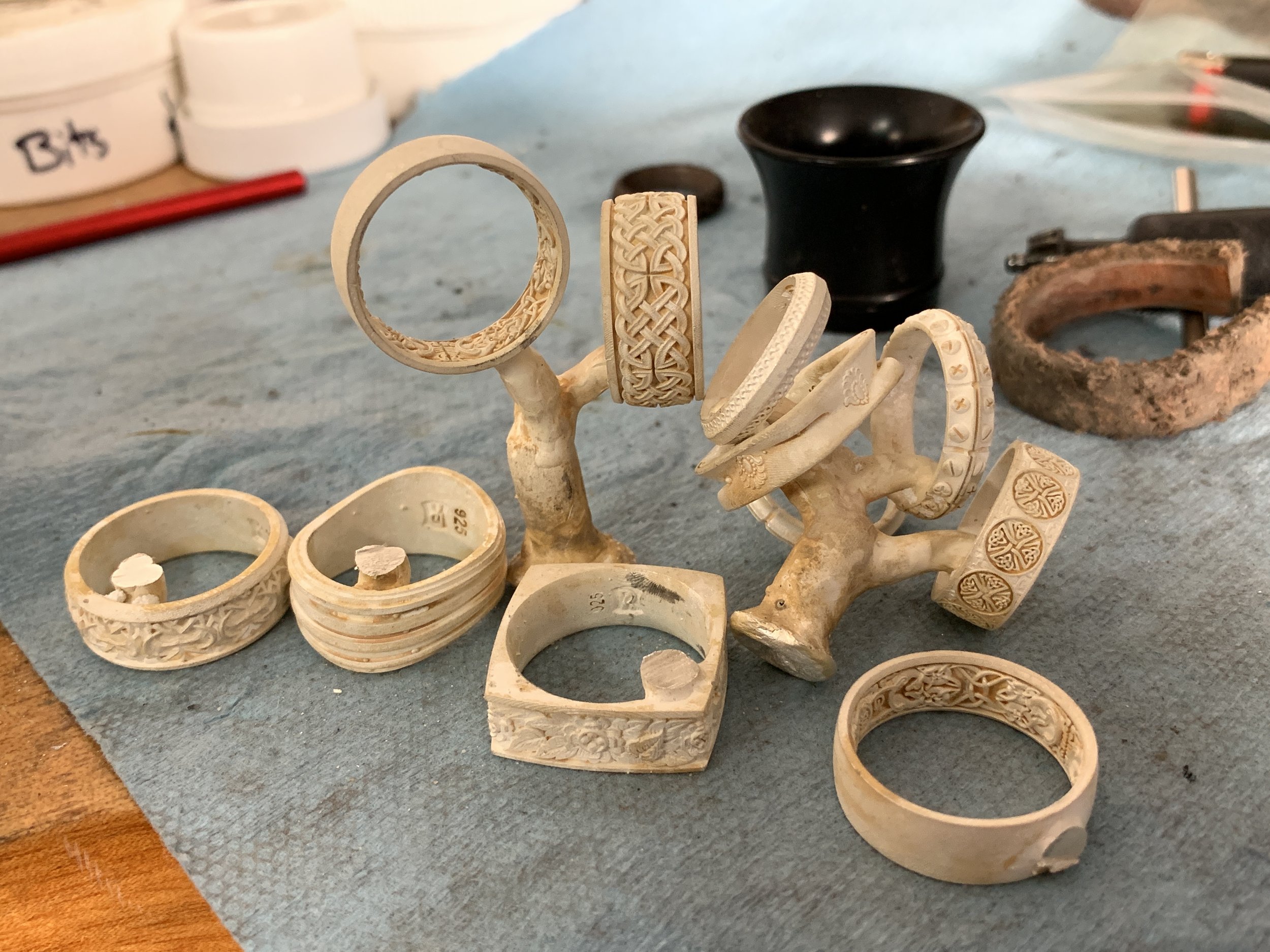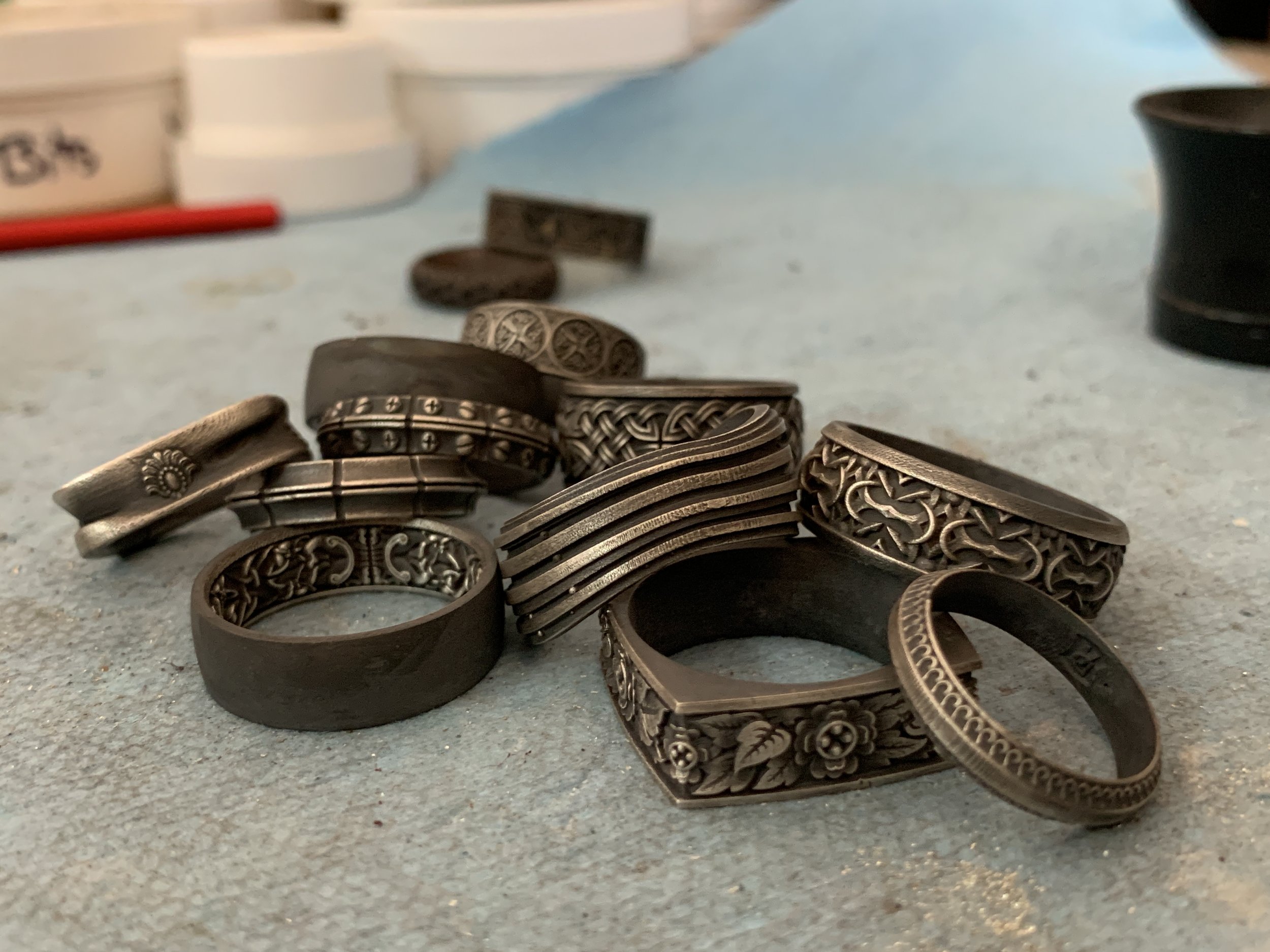The Raw Casting
After a ring is cast into metal it has this casting skin on it that prevents the metal from shining. Also the surface is semi smooth for smooth waxes and a little more rough for waxes that were not that smooth before casting. The color is also a little different. Just after casting the metal is a bit oxidized which means it’s black on the surface with a hint of the metal color mixed in. It needs to be “pickled” or put into some acid that will get rid of the black surface and make the metal a nicer color. For silver that is a dull white and for 14k yellow gold it’s a dull yellow. Now it’s ready to go to the cleanup process where the casting skin can be taken off.
Just after casting. The ring is now ready to go into the “pickle” or acid to get the black surface to a clean surface.
These silver castings have already been pickled to a dull white color. Some of them have been cut off the tree.
The cleanup process
Cleaning up the jewelry after casting can be a lot of work, but it’s rewarding. Bands are probably the easiest to clean up. Some engagement rings can be very difficult and time consuming. So let me explain the process so you can have a better idea. I’ll go through the general idea.
After a ring is cast the sprue has to be cut off which is where the metal was poured into the impression of the ring (see the image above). You do that by grinding it off until smooth with the rings surface. I usually will get it as close as I can, but not quite all the way. I can then use a finer grinder or even a file to help file it down. Then sand paper at various grits can be used to get the surface super smooth. This is the general idea. I’ll go over wedding bands and engagement rings in the next parts.
Wedding Bands
So wedding bands are usually simple and straight forward. Again, once cut off it has to be grind down so that it’s non existent. As you get close to the actual ring surface while grinding you have to slow down and take your time and use less aggressive methods. Then the whole ring has to be done in this way to get every surface clean and smooth as possible. Now it’s ready for polishing.
Engagement Rings
Engagement rings are sometimes a bit trickier to clean up. For these more difficult rings you need to used small files or even a small amount of sand paper wrapped around the tip of a mini file to smooth hard to reach areas. Also using a rubber wheel can help out a lot. This is attached to your flex shaft. It spins very fast and can speed things up if you are careful. Leaving it too long in one spot can dig into the surface and ruin it. So be careful and take your time. There are times you even need to use dental floss with polish on it to polish up hard to reach areas. Although there are some places you can’t get to there is a solution to at least brighten it up. Using a magnetic tumbler with tinny steel needle like pieces are used to tumble the ring and get those non accessible areas. Once the ring is cleaned up to the best of your ability and as smooth as it can be it’s ready for polishing.
Conclusion
Cleanup after casting a ring is a very important process to go through. This will determine how much easier the next step of polishing will become. It makes the ring clean and free of blemishes and rough surfaces getting it ready for polishing. I have to say that I don’t think many people know what’s involved in getting a ring ready for final viewing. Usually it’s seen as a highly polished and perfect piece of jewelry, but it wasn’t always like that. It is quite the process that takes progressive steps along the way until its shine goes through. I hope this explanation helps a little bit to visualize the process and maybe think about the craftsmanship that goes into making a finished jewelry piece.





